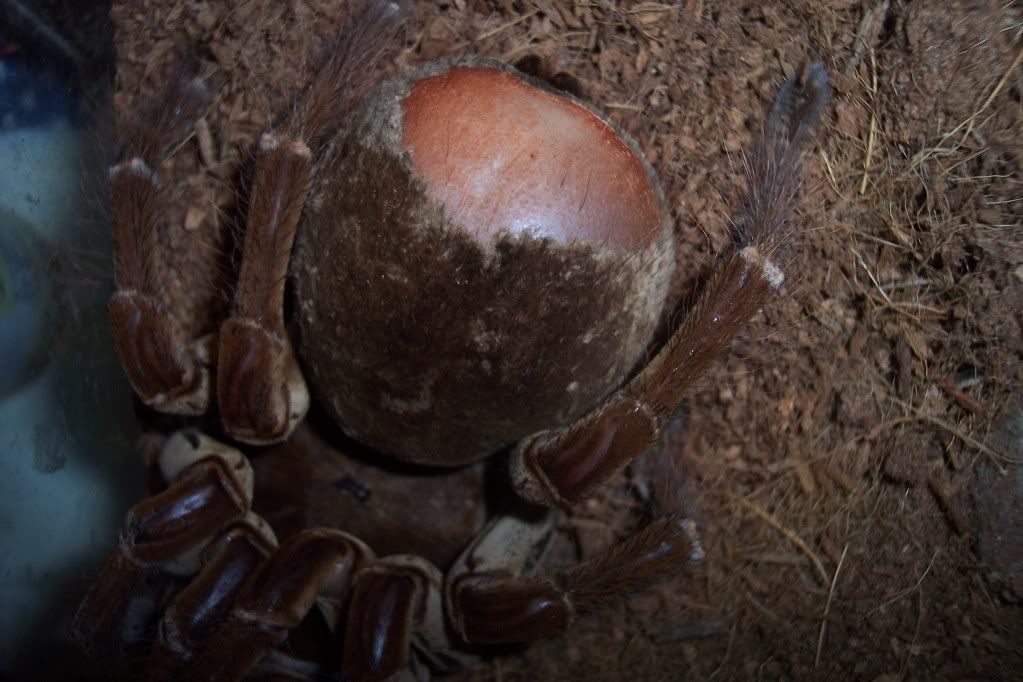So, I just got my first Theraphosa blondi (Goliath Birdeater). had a pet store order a female in and picked it up, She seemed healthy from what I saw in the pet shop, she was eating so I didn't want to mess with her too much. After getting her home (the pet store was nice enough to let me take the tank home and bring it back when my box of bugs and other orders came in in a few days) I noticed this bald spot on her abdomen. I did some reading on it, and from what I gather it is common when they get stressed to kick hair off. However this doesn't look like a bald spot, but rather raw. The 2 days after bringing her home she ate/ killed 5 large crickets, and a week later she ate 3 more. Seems healthy, but did notice she like to hunker in one spot, and after she moves she sits back down. The cage is a 20 gallon, the temp goes from 83 during the day to no lower than 78 at night (a hot side that never goes below 80) with about 70-80% humidity. Should I be worried, or just wait for her molt, any information would be great, I'm fairly new to the spider hobby, but an experienced pet keeper. I know I gave a lot of information, but I want to make sure she healthy and happy. Here is a pic, I know its not the best, I'm getting a HD cam today to try and get more uploaded today. This pic is from the day I got her, the spot has grown a bit, but not too much, the color of the exposed spot is a little pinkish but hasn't changed, just the edge around it has turned a little darker on the healthy parts.
http://www.facebook.com/photo.php?pid=1795686&l=d198f9f15f&id=1314450038
http://www.facebook.com/photo.php?pid=1795686&l=d198f9f15f&id=1314450038

